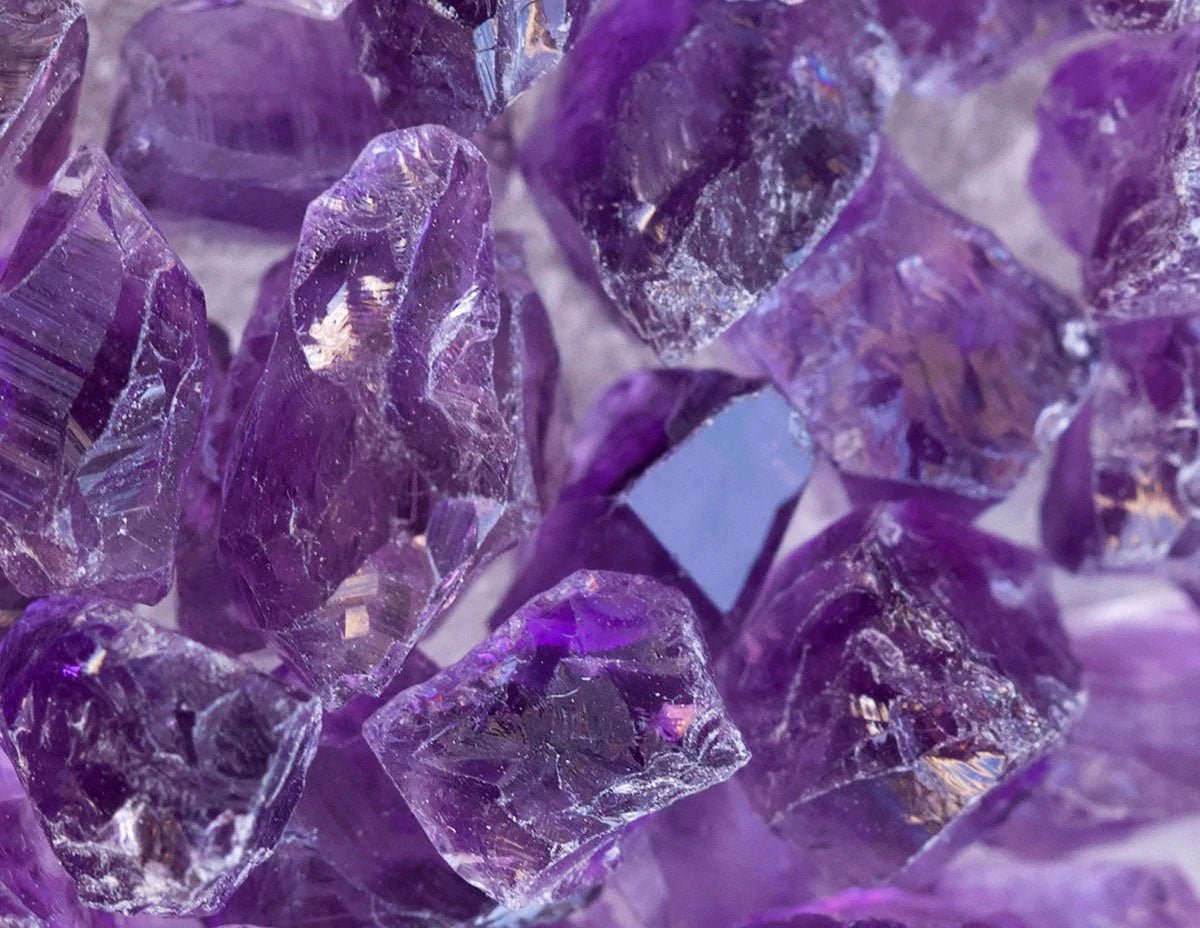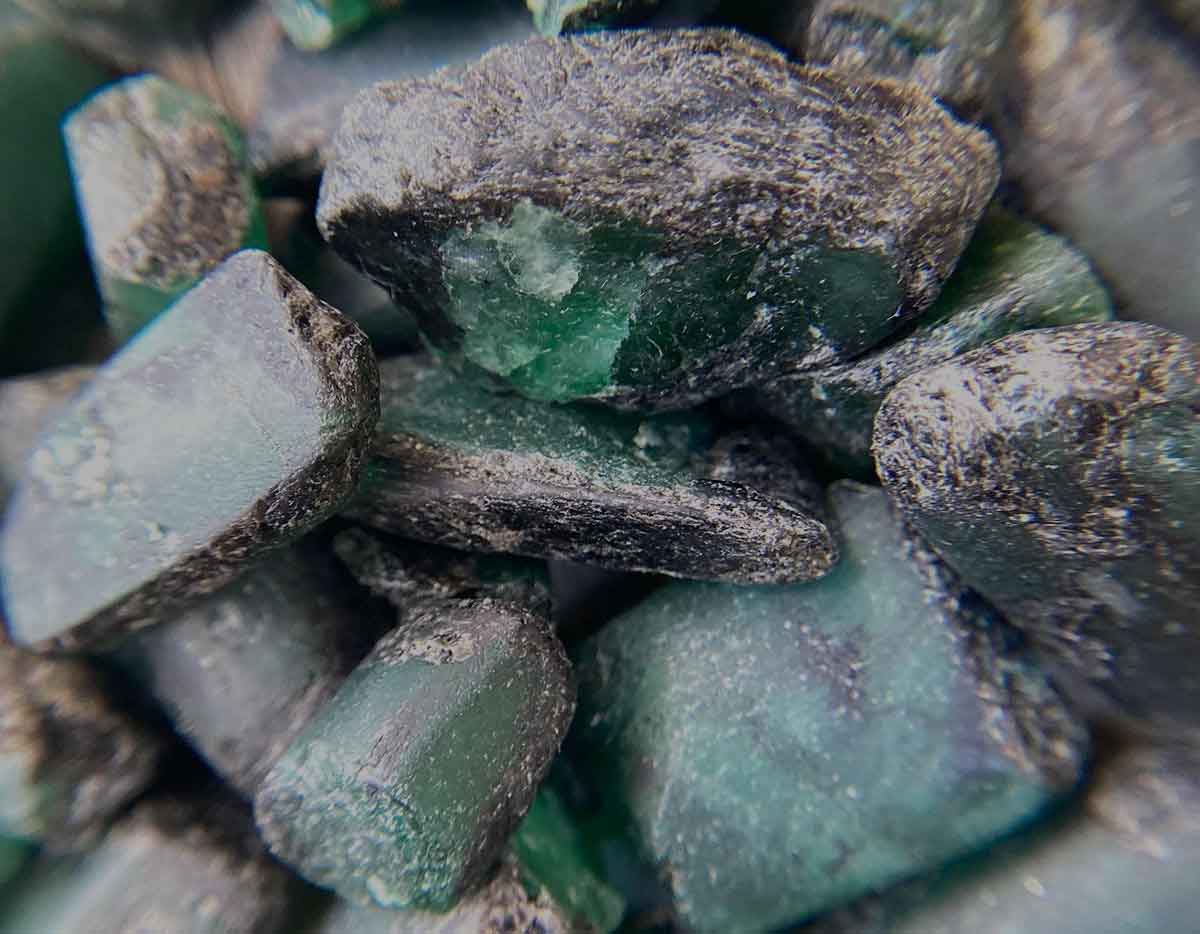Moving on from Egypt, the earliest recorded writings from ancient India begin to appear around 1500 BCE and it is clear that amethyst was admired amongst the people there, possibly stretching back further into pre-written history. The Vedic Culture of Bronze Age India constructed sophisticated methods of time-keeping and 12 month lunisolar calendars, all within the practice of Ayurveda. Although each month has a corresponding stone, not unlike the contemporary concept of birthstones, the wearer of the stones would not strictly adhere to one stone per month, as we usually would today. The gemstones were believed to have different properties and therefore would be required for different purposes depending on who needed them.
Greece, Rome and the Middle Ages
Now that we have reached the ancient Greeks and their later admirers, the Romans, we can see where the modern myths, tales and reputation built up around amethyst has its origins. Even the name, amethyst is a clue. It is derived from a Koine Greek word "Amethystos", meaning 'not intoxicated'. Sounds rather strange for a purple-violet gemstone vaguely wine-colored, but it was the similarity in color which bore its name.

The Greeks had a large pantheon of gods and goddesses, many of which had corresponding figures in Roman writings, just with Latinized names. So the legend goes that one day, Dionysus (or Bacchus if you're Roman), god of wine, ecstasy and fruitfulness, had become infatuated with a beautiful maiden called Amethystos. Unfortunately for the wine-god, his advances were rebuffed by the maiden wishing to remain chaste, and, not taking this rejection well (to put it mildly), he decided to set two wild tigers loose on the innocent Amethystos, who was making a pilgrimage to the shrine of Artemis (or Diana).
Seeing this injustice, the goddess stepped in and thinking-quickly, she turned the maiden into a solid block of pure white stone. Once the wrath had passed, Dionysus felt guilty and sorrowful for his actions and in tribute, poured out his wine upon the block of stone, transforming it from pure white into the pleasing purple hues we all know today. This association with sobriety and clear-headedness remained, with Romans creating amethyst vessels to drink their wine from, presumably to prevent drunkenness.
As the Roman empire expanded and evolved, a new religion came to take the place of the old pantheon and this religion, Christianity, would also pay homage to amethyst and recognize it as a special gemstone.
The Middle Ages, Christianity, Buddhism & Beyond
The color purple had long been established as a regal color, befitting a king. Likely due to how costly and arduous it was to produce a purple-colored dye in days of old. With Christianity expanding into all the territories of the former Roman empire and beyond, so too did myths, legends and stories from the Jewish Bible.
Amethyst was mentioned as being one of the gems which adorned the Breastplate of Aaron, as mentioned in the book of Exodus and was again mentioned in the Book of Revelation, being one of 12 foundation stones which make up the kingdom of New Jerusalem.

The number 12 has spiritual significance in Biblical tradition, with there being 12 Tribes of Israel, 12 gems on the Breastplate, Jesus had 12 disciples, there are 12 months in a year and so on. During the Middle Ages when Europe began to experience some renewed prosperity, bishops would wear amethyst rings, often with carved figures, to display their dedication and to declare themselves as 'wed to the Church'. One Roman clergyman who is said to have worn an amethyst ring (with a carved image of Cupid on it) was none other than Valentine of Terni, who was canonized as Saint Valentine after he was martyred for spreading the Gospel. The Feast of Saint Valentine (Or Saint Valentine's Day) is still synonymous with love and romance.
The spiritual significance of amethyst was not limited to Jewish or Christian faiths, moving east we can see that amethyst is considered by Tibetans to have been sacred to Siddhartha Guatama - The Buddha. The Tibetan Buddhists made prayer beads of amethyst called "Malas" . The beads would be used to keep track of how many mantras had been said and amethyst was itself used often for medicinal purposes, alongside other gems.

Renaissance, Age of Exploration and Age of Empire
Throughout the period of the Middle Ages, right up through the Renaissance, amethyst retained its reputation as a stone which would bring mental clarity. Soldiers would wear it whilst in battle, hoping it would give them an edge in the midst of a chaotic battlefield. It was generally regarded as ailing toxicity and balancing out the body. Leonardo Da Vinci, the most famous Renaissance man, was reportedly using amethyst for this purpose.
As the decades passed, the Age of Exploration began to bring new sources of wealth and treasure to those daring or stupid enough to sail the seven seas and retrieve them! One such mine was the Anahí mine in Bolivia. Legend has it that sometime in the 1600s or 1700s, a Conquistador was given ownership of the mine as a dowry after he married a local princess named Anahí, of the Ayoreos tribe.

South America indeed would become an important source of amethyst, but it was to be Brazil where massive quantities of amethyst was to be found. So much so that the price of amethyst plummeted due to increased supply! The perceived value of amethyst took a blow as it was no longer solely obtainable by monarchs, aristocrats and clergy.
Royal Purple
Although the prestige of amethyst had taken a blow, given its place throughout history, it was not entirely discredited. Ever since the ancient Egyptians, royal jewels had been adorned and encrusted with amethyst as well as the other usual suspects of emerald, ruby, diamond etc. European royal families continue to keep that tradition alive with many of the finest jewelry sets ever made being commissioned for various kings, queens, princes or princesses.
As Cromwell's puritanically-tight grip over England faded upon his death, the coronation of king Charles II became a large celebration and King Charles II commissioned the Sovereign's Sceptre with Cross for his coronation, which has been used in every coronation since then in 1661. It is a truly magnificent piece of art. At the middle of the Cross there is a hefty step-cut emerald. Below that, there is an orb fashioned from a large faceted amethyst set with emeralds, rubies, spinels and diamonds. The sceptre symbolizes the temporal power of the monarchy as is meant to represent good governance.
Amethyst jewelry continues to be worn by members of not just the British royal family, but other European Houses as well, such as the Flora Danica Tiara worn by Princess Marie of Denmark or the Nassau Amethysts, belonging to the royal jewel collection of Luxembourg.
Queen Consort Camilla of the United Kingdom is known to wear a diamond, pearl and amethyst necklace which has a large heart-shaped amethyst pendant. The necklace originally was a wedding gift to the Queen Mother from Queen Alexandra.

Commercialization 1800s, 1900s and now
Towards the latter stages of the 1800s/ early 1900s, the Tiffany & Co. diamond corporation was beginning to forge their empire. In order to boost sales of other gemstones aside from diamonds, they created a list of 'birthstones', of which amethyst was chosen for February. VP of Tiffany & Co. George Frederick Kunz wrote a book on the topic and this genius piece of marketing turned out to be extremely influential!
We source our deep purple amethyst from Uruguay, a country famous for its amethyst deposits. Our rose de france amethyst is clear and sparkly with a rosey purple color. You can see currently available pieces in our Ready to Wear section or customize one in our m
ade to order section here.










